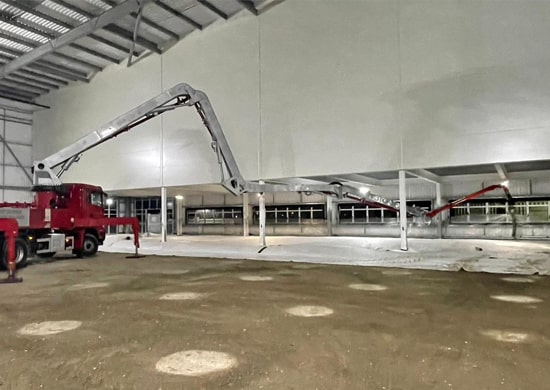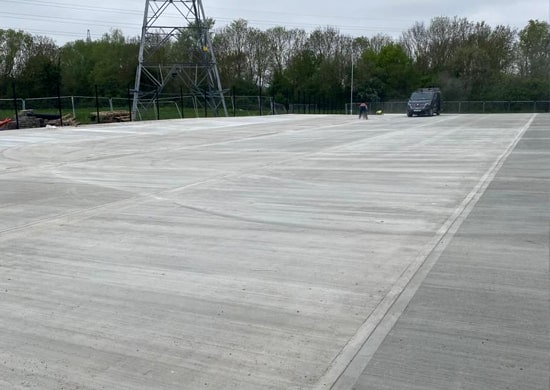A good retaining wall keeps your garden steady and stops soil from creeping out of place after heavy rain. When you build concrete retaining walls, you get a stronger, longer-lasting structure that can handle pressure and weather with less hassle. GOV.UK [1] says you usually don’t need planning permission for garden walls under one metre high, or under two metres if they're not near a highway. That's why many homeowners build them to level a slope or tidy up a tricky corner.
Most problems start with shallow footings or poor drainage. Walls lean, crack, or shift because the ground and water around them were not adequately managed at the start. This guide keeps things simple. You will learn how to plan the wall, prepare a solid base, manage drainage, and pour ready mix concrete in clear, DIY-friendly steps.
Plan Your Retaining Wall Once & Build It with Confidence
Start with location. Pick a line where water can drain away, not one that sits behind the wall. Avoid building too close to sheds, fences or boundaries and check local guidance if you are unsure about height or placement.
Then decide how high the wall needs to be and what it is holding back. A short wall for a raised bed is a very different job from one keeping a whole bank in place. As height increases, the pressure behind the wall rises as well. So, keep DIY projects small, and call a pro for anything large or load-bearing. The Building Regulations [2] state that retaining walls over 1.2 metres high often need structural calculations. This is to ensure they can withstand lateral earth pressure safely.
Finally, look at the soil. Clay moves as it gets wet and dries. Sandy or loose soils can wash out if not well compacted. Knowing what you are standing on helps you choose footing depth and drainage that will keep the wall stable.
Get Your Concrete, Kit & Tools Ready Before You Dig
Ready mix concrete is the easiest way to get a strong, consistent wall. Proportions are controlled at the plant, so you can focus on the build rather than guessing ratios. If you want to see how different mixes are used for structural work, this guide is useful.
You will also need:
- Steel bars or mesh to reinforce the wall
- Type 1 or MOT base material for the footing
- Clean gravel and a perforated drainpipe for water runoff
- Landscape fabric to stop soil from working its way through
Keep tools simple and practical. A spade, tamper, level, wheelbarrow, formwork boards and basic PPE will handle most small walls. If you are new to this kind of project, our DIY concrete page has straightforward advice for first-timers.
Simple DIY Steps to Build a Concrete Retaining Wall
Step 1: Excavate a Level Base Trench that Will Not Move
Mark out the line of the wall and dig a trench wide enough for the footing and formwork. The trench should be deep enough to sit below the topsoil and give the wall a firm seat. Compact the bottom of the trench and add a layer of Type 1 base, keeping it level from end to end.
Check your levels as you go. Take your time here, and the rest of the build will be easier.
Step 2: Add Drainage & Gravel so Water Has Somewhere to Go
Lay landscape fabric along the back of the trench and place a perforated drain pipe at the lowest point. Cover it with clean gravel so water has a clear route away from the wall. This reduces the pressure that can build up behind concrete. Proper drainage is essential because saturated soil increases pressure on retaining structures. This follows principles outlined in the GOV.UK guidance on managing surface water [3].
Think of the pipe and gravel as the safety valve for your wall.
Step 3: Set Your Formwork & Steel to Shape a Strong Wall
Fix timber formwork along the trench to define the wall's shape and height. Brace it so it will not move once the concrete goes in. Place steel bars or mesh inside the form, raised slightly on small spacers so it sits within the wall, not on the soil.
Check that the steel runs where the greatest pressure will be, near the back of the wall.
Step 4: Pour Ready Mix Concrete for A Clean, Solid Wall
Book your concrete delivery for a time when the forms and reinforcement are ready. Pour the ready mix in stages and use a shovel or rod to work it into corners and around the steel.
Tap the formwork to bring air bubbles to the surface and level the top with a straight edge so the wall has a clean finish.
Step 5: Let the Wall Cure, Then Backfill & Finish the Ground
Let the concrete cure according to the guidance for your chosen mix. Keep it shaded from intense sun and protected from heavy rain in the early stages. When it is firm, remove the formwork and check for any apparent defects. Backfill with gravel behind the wall and compact soil above in layers so the ground supports rather than strains the concrete.
Give the wall time to gain strength before loading it with heavy features or deep beds.
Keep Your Wall Steady, Keep Your Garden Sorted
A well-built concrete retaining wall holds back soil, levels uneven ground, and stays firm through winter weather. Plan the line, footing and height carefully, and your retaining wall becomes a stable framework for terraces, lawns and beds that will work with your garden for seasons. Using ready mix concrete also means you can pour the wall in one organised run, rather than stopping to mix by hand, and a simple volume calculator helps you size the order so you avoid both waste and shortfalls.
Wright Readymix delivers ready mix concrete across the South West, with mixes suited to small DIY jobs and larger landscaping projects. Our team can guide you on the right strength, help you estimate volumes using our concrete volume calculator, and arrange delivery that works around your schedule.
Call 0117 958 2090, or get in touch to talk through your retaining wall project and book the concrete you need.
External Sources
[1] https://www.gov.uk/planning-permission-england-wales
[2] https://www.gov.uk/building-regulations-approval
[3] https://www.gov.uk/guidance/flood-risk-and-coastal-change




